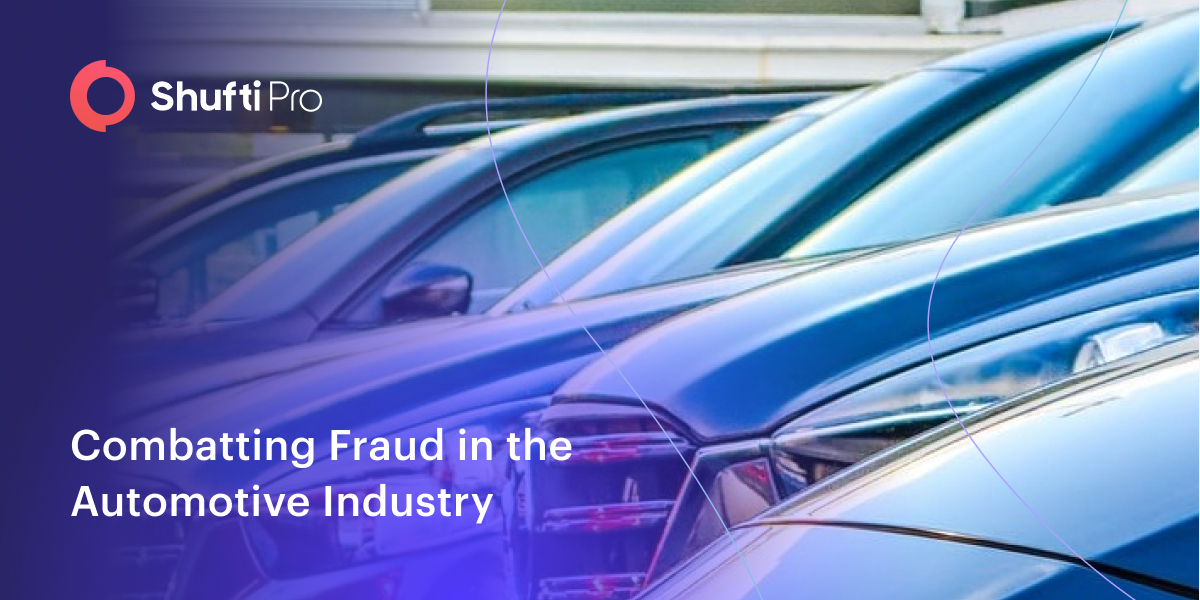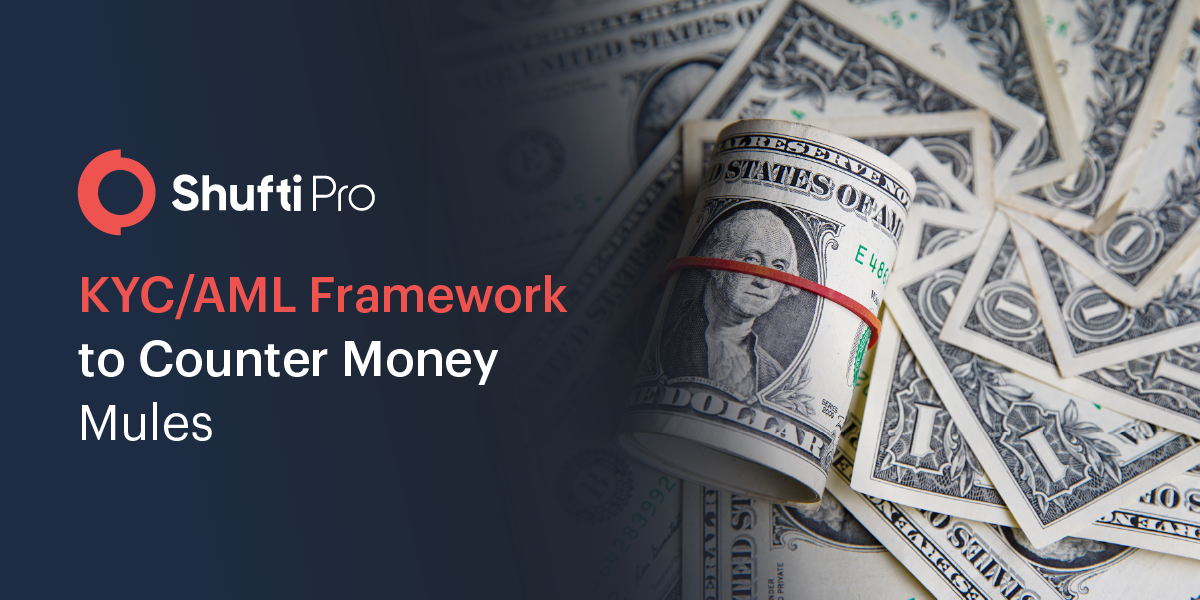Fighting Financial Crime: Why KYC and AML Compliance Is Essential for the Global Finance Sector

- 01 What Is Money Laundering—and How Does It Work?
- 02 Why Financial Institutions Are Under Pressure
- 03 Why Money Laundering Is Growing Despite Stricter Regulations
- 04 KYC and AML: The Tools for Fighting Back
- 05 Common Types of Fraud in the Financial Sector
- 06 Recent Developments in Global KYC and AML Compliance
- 07 The Consequences of Non-Compliance
- 08 Final Thoughts
Banks and other financial institutions are often the first line of defense against financial crime, but they are often prime targets as well. Whether it’s due to negligence or design, these institutions are frequently exploited by criminals looking to clean illicit funds and move them into the legitimate economy. As the digital age has gone along, paper cash has been overtaken by digital means and so too has financial crime. As the tactics used by money launderers have evolved, the financial sector has been forced to adapt and adopt more robust tools to counter the threat.
With global financial flows now almost entirely digitized, laundering money doesn’t necessarily involve walking into a bank with a suitcase full of cash (although that probably still happens from time to time). Criminals today use a combination of shell companies, layered transactions, and anonymized technologies to obscure the origins of their ill-gotten wealth. Without proper controls in place, financial institutions risk becoming unwitting conduits in this process.
What Is Money Laundering—and How Does It Work?
Money laundering is the process by which illegally obtained funds are disguised to make them appear legitimate. The money can come from any number of illicit activities, be it drug trafficking, corruption, cybercrime, or investment fraud, but the goal remains the same: integrate criminal proceeds into the financial system without detection.
The laundering process generally takes place through three stages:
- Placement — The funds enter the financial system, often through cash deposits, smurfing, or business fronts.
- Layering — Transactions are used to obscure the money’s origin, often across multiple accounts, countries, currencies, or asset classes.
- Integration — The cleaned funds are reintroduced as seemingly legitimate income, whether it be through investments, luxury purchases, or business ventures.
Due in large part to their global reach and high volume transactions, financial institutions are ideal for each stage of this process, unless strict protective measures are in place.
Why Financial Institutions Are Under Pressure
Banks, fintechs, and other financial service providers are currently facing more pressure to identify and report suspicious activity than ever before. Failure to comply with global AML frameworks can result not only in significant fines, but as in reputational damage, customer loss, and regulatory scrutiny.
So why is money laundering increasing despite stricter regulations?
Why Money Laundering Is Growing Despite Stricter Regulations
Globalization
Globalization has increased financial connectivity across borders, creating more opportunities to move illicit funds overseas. Investigations often span multiple jurisdictions, creating significant logistical challenges when it comes to enforcement and prosecution.
Digital Transformation
The substantial rise in online payment systems, digital banking and cryptocurrencies has added layer upon layer of complexity to the global financial system. New tools allow funds to move faster and more anonymously than ever before (this is especially true with cryptocurrencies and so-called “privacy coins”). Criminals leverage everything from “buy now, pay later” schemes to blockchain-based mixers to hide financial trails.
Weak Regulation in Some Jurisdictions
In countries and territories where enforcement is weak or inconsistent, financial systems become prime targets for laundering and other financial crimes. Criminals are quick to exploit regulatory gaps in underregulated or developing markets to funnel and clean illicit funds.
Increase in Global Crime
As crimes like human trafficking, cyber fraud, arms dealing, and narcotics continue to rise, so too does the amount of money that needs to be “cleaned”. More crime means more “dirty” cash entering the legitimate and mainstream economy.
Political Instability
During times of political conflict and turmoil, alongside weakened governments, money can be moved around much easier without fear of enforcement. Illicit funds are often moved across borders during times of unrest, and hidden in international assets or offshore accounts.
Improved Detection and Reporting
While the drastic increase in money laundering might seem to be nothing but bad news, the growth of reported laundering cases is also tied to better detection mechanisms. Stricter regulations have led to improved monitoring, which helps uncover fraud that would have previously gone undetected.
KYC and AML: The Tools for Fighting Back
Implementing KYC and AML frameworks into financial institutions serves to check regulatory boxes as well as provide a backbone of risk management strategy throughout the entire operation.
At their core, these frameworks require institutions to:
- Verify and authenticate customer identities
- Assess and categorize client risk levels
- Screen against global sanctions, PEPs, and adverse media lists
- Monitor transactions and behaviors in real time
- Maintain clear audit trails for compliance and reporting
Whether under FATF guidance, the EU’s AMLD6, or jurisdiction-specific laws like the U.S. Bank Secrecy Act, these obligations are non-negotiable. As regulatory expectations rise and financial crimes become more sophisticated, staying compliant means going beyond static checks. It means adopting tools and workflows that scale, adapt, and respond to threats in real time.
Common Types of Fraud in the Financial Sector
Money Laundering and Terrorist Financing
Dirty money is hidden through layers of transactions and then later used to finance extremist groups or criminal enterprises. Banks and other institutions that fail to prevent such transactions are subject to fines, sanctions, and even criminal liability.
Account Takeovers
Using stolen credentials, fraudsters take control of a customer’s account and conduct unauthorized transactions or purchases. The rapid development of biometric verification has been, in large part, a response to this threat.
Phishing and Social Engineering
Fake emails or messages are used to trick employees or customers into revealing sensitive information such as login credentials or internal data. It is critical that organizations conduct staff training and employ email security systems to act as countermeasures.
Fake or Stolen Identities
Fruadsters open accounts or obtain loans under fabricated or stolen identities. Without a robust identity verification system, institutions can be easily fooled.
Recent Developments in Global KYC and AML Compliance
Technology-Led Monitoring
Many banks and other financial institutions are adopting new and innovative technology like AI, machine learning, and blockchain technology to enhance the KYC and AML process. These tools work to detect suspicious behavior in real time and reduce false positives.
Risk-Based Approaches
Regulators across the world are stressing the importance of using a risk-based approach to KYC and AML instead of blanket checks, which intensifies scrutiny for high-risk users and eases it for low-risk individuals.
Enhanced Due Diligence (EDD)
EDD is a prominent feature being enforced within financial institutions and is increasingly required for high-risk clients such as politically exposed persons (PEPs) or individuals from high-risk jurisdictions. This process includes deeper investigation into financial background, ownership structures, and source of funds.
Collaborative Systems
In Scandinavia, the Nordic KYC Utility is a centralized database that was created by five major Nordic banks and has helped to streamline and standardize KYC across the region. This centralized approach improves data sharing, lowers compliance costs, and significantly increases transparency, and has helped each bank to reduce the cost of their KYC/AML programs.
The Consequences of Non-Compliance
Non-compliance with AML regulations can vary depending on the type of financial crime and the scale at which the crime was committed, up to and including severe financial penalties and reputational damage. Recent enforcement actions underscore the importance of robust compliance programs:
- TD Bank (2024) – Fined $3 billion by U.S. regulators for systematic AML failures, including facilitating over $650 million in transactions tied to drug trafficking. TD Bank admitted to active negligence of its AML program, leading to significant leadership changes and the appointment of an independent compliance monitor.
- Bianance (2023) – The world’s largest cryptocurrency exchange was levied a fine of $4.3 billion by U.S. regulators for violating the Bank Secrecy Act, including failures around the implementation of an effective AML program and allowing transactions with sanctioned entities.
- Starling Bank (2024) – The UK-based neobank was fined £28.9 million by the Financial Conduct Authority for opening no less than 54,000 accounts for high-risk customers without proper AML checks, reflecting significant lapses in CDD and company-wide oversight.
These cases illustrate that regulators are increasingly vigilant and willing to impose significant penalties for AML negligence and non-compliance. Financial institutions must prioritize the development and maintenance of full AML frameworks to help mitigate risks and avoid similar consequences.
Final Thoughts
From cross-border transactions to anonymized payment tools, money laundering has become faster, smarter, and harder to detect. Financial institutions now face great pressure, not only from regulators, but also from the growing complexity of financial crime itself.
KYC and AML frameworks remain the most effective tools for identifying risk, flagging suspicious behavior, and maintaining compliance across jurisdictions. In a financial landscape where shell companies, fake identities, and digital layering are standard tactics, strong anti-money laundering controls are essential for any institution’s survival.










































































